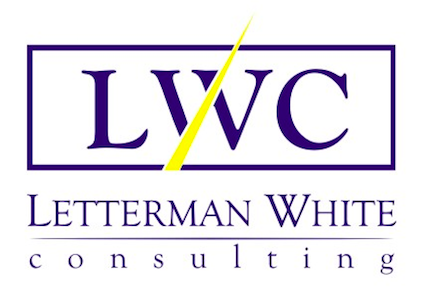By Susan Letterman White
Leaders expect results, organizations fall short, time and money are wasted, and frustration builds.
How did that happen? How do you fix it?
Expectations and effort are not enough. An equity audit is not enough. Diversity, equity, and inclusion (DEI) training is not enough.
Hastings Law Professor Joan Williams reports in Fortune magazine that organizations spend some $8 billion a year on diversity, equity, and inclusion (DEI)—and see remarkably few results. Leaders are trying sincerely to bring a more diverse workforce into their organizations, yet, despite expending large amounts of time and money to drive high expectations, their approaches are ineffective. They begin with an equity audit or hire outside experts from the best universities to explain concepts like implicit bias and systemic racism. Neither is sufficient alone or even together.
As a current DEI practitioner and former managing partner of a law firm, I've provided assessment, training, coaching, and facilitation for high level executives at law firms, municipal government, and state and federal government agencies in transportation, healthcare, and finance. I've worked with top leaders and executives who have a sincere desire to change their organization to a more diverse, equitable, and inclusive culture. When we work together, they experience positive change. However, most leaders, who are failing to achieve their organization’s expected results, drop the ball by not continuing the work.
Too many leaders waste time and money trying to address DEI problems without sustainable results. The problems are systemic problems and the solutions should be systemic, too. DEI challenges are not solvable with a single intervention. Real, sustainable change requires ongoing efforts throughout every level of the organization.
Every organization has opportunities for systemic change. Yet, most organizations stop after making a single change at a single level of the organization, like training individuals to change how they think and behave. Every organization has opportunities for sustainability. Instead change efforts stall after an equity audit or a training series as if DEI is a “one and done” proposition.
An Equity Audit Is Not Enough
Leaders drop the ball when they don’t leverage the momentum built from an equity audit.
Leaders seek equity audits because they have recognized the symptoms of systemic issues of inequities, like disaggregated data showing implicit bias-based disparities in hiring, compensation, and/or promotions or listening sessions that generate qualitative data of implicit bias-based disparities in how people are treated in workplace meetings and team conversations. Collecting and analyzing equity data and then creating the strategic blueprint is not enough. Leaders must take the next step and call their team together to collaboratively design and implement a plan based on the blueprint, yet many organizations never go through the required steps and wonder why they are unable to execute the strategic blueprint provided by the racial equity audit.
This failure phenomenon is not limited to DEI projects. HBR reported that statistically, approximately 70% of change projects fail. There is debate on the accuracy of this statistic; however, there is no debate that according to 2008 research from IBM, the need to lead change is growing, but our ability to do it is shrinking. McKinsey reported that 70 percent of change programs fail to achieve their goals, largely due to employee resistance and lack of management support. Even when people are truly invested in change the success rate is only 30 percent more likely to stick.
DEI change recommendations have a better chance of being implemented when leaders quickly transition into implementation planning and execution of the strategic plan. If leaders hesitate pushing positive change forward, the organization loses momentum. To recover, takes additional time, money, and workforce effort. One of my first clients called me after this exact experience.
The law firm had hired a well-known consulting firm to develop a strategic plan. It sat on a shelf collecting dust because firm leaders had not been able to translate the strategic plan into an implementation plan, which often requires discussions about roles, responsibilities, and timing. Often, difficult discussions about trade-offs in resource allocation and sometimes difficult decisions about changes to a business model arise. The avoidance of difficult conversations combined with the absence of clear roles and responsibilities was enough of an obstacle to stall the entire process. By the time they called for help, any motivation and energy for the work, first had to be recovered.
DEI Training Is Not Enough
Leaders drop the ball when they make training their only DEI initiative.
Equity audits almost always include a recommendation for extensive DEI training. The strongest leaders may not be inclusive leaders and even the best effort at fairly evaluating individual performance is often not equitable. They will benefit from training. Training is also an easy initiative to launch. Leaders delegate the training design and delivery to external experts or their learning and development department. Leaders then “show up” and learn, like anyone else at the training. The time demand on leaders is minimal as compared to other DEI change initiatives and a leader can say they did something. Unfortunately, what often happens is that training is the first, and often, only DEI initiative. Similar to an equity audit, the bulk of the work and time is delegated, while giving leaders credit for DEI efforts. Also similar to the equity audit, the initiative has a high likelihood of not achieving the expected DEI results without the right follow-through from leaders. The follow-through with training is the immediate application of learned material to a DEI challenge and the intentional spreading of DEI competencies learned to others in the organization through behavior modeling and using feedback effectively.
Systemic problems are never addressed with an initiative aimed to improve individual skills and performance. Systemic problems require systemic solutions. While DEI leadership training is a solution aimed at individuals in an organization, adjustments to policies, processes, and structures are systemic solutions aimed at the organization as a whole. Equity audits include recommendations for changes at the organization itself.
If roles, responsibilities, lines of authority, and collaboration requirements are unclear in job descriptions, then implementing change is difficult or impossible. If the culture does not favor a growth mindset - the openness to discuss and learn from mistakes - then people in the organization will behave in alignment with a culture that encourages excessive defensiveness and inhibits learning and change. If communication is flawed, either the right messages are getting lost or the wrong impressions are left unexamined. If the hiring, evaluation, and promotion processes are inequitable; i.e.,they use decision criteria that are not objectively measuring the ability to do a job or apply objective criteria through an implicitly biased lens, then disparities will continue to define the status quo.
Equity audits always identify organization-level strategies, yet too often, they remain as ideals or long-term goals. They require more time and effort to put in place and, unlike training, there is no option to simply schedule an event and then “check-the-box” for completion.
Fixing the Problem
Leaders meet expectations when they follow through
Take these steps to sustainable and systemic change that increases diversity at all levels and strengthens a culture of equity and inclusion.
An Equity Audit - A robust equity audit that identifies strategies for change at all levels of the organization is the first step. Without the result of an equity audit - the blueprint or overarching strategy for improving diversity at all levels of the organization and a culture of equity and inclusion - you won’t know where to focus your efforts.
Designing Your Implementation Plan - Leverage the momentum of your equity audit and put the recommendations into action right away by bringing the right people together to collaborate on the development of the strategic implementation plan. The “right” people are those who will be expected to implement any action step of the plan and those who will be affected by changes anticipated. These are changes at the organization level to structures, processes, resource allocation, and communications and selecting who is responsible for doing what by when to make those changes a reality. This is often the first time the points of disagreement surface and why including an outside facilitator to help transform conflict into a productive discussion that builds commitment, engagement, and motivation in addition to help with prioritizing initiatives is wise.
Executing the Implementation Plan - Once you have a strategic implementation plan that dictates who is responsible for doing what by when, start the execution. Execution is an iterative process where improvements are expected at every cycle. When problems and obstacles arise, it’s time to develop strategies to eliminate or navigate around them.
Having Difficult Conversations - The iterative process of executing a strategic implementation plan always surfaces points of resistance from anyone affected by the change work and disagreement among executives. Do not avoid these conversations.
Making Difficult Decisions - Resistance can stop or stall progress. Do not avoid making these decisions. Get help from a facilitator who is experienced with conflict management.
What Next?
Leaders are already demonstrating their commitment by allocating resources, like time and money. If your organization has done an equity audit it’s time to plan for its implementation. If your organization has done training it’s time to aim more broadly and consider how to change processes and structures. Sustainable improvements will follow as long as actions continue. As a leader you can change your organization and the time to do it is now.


